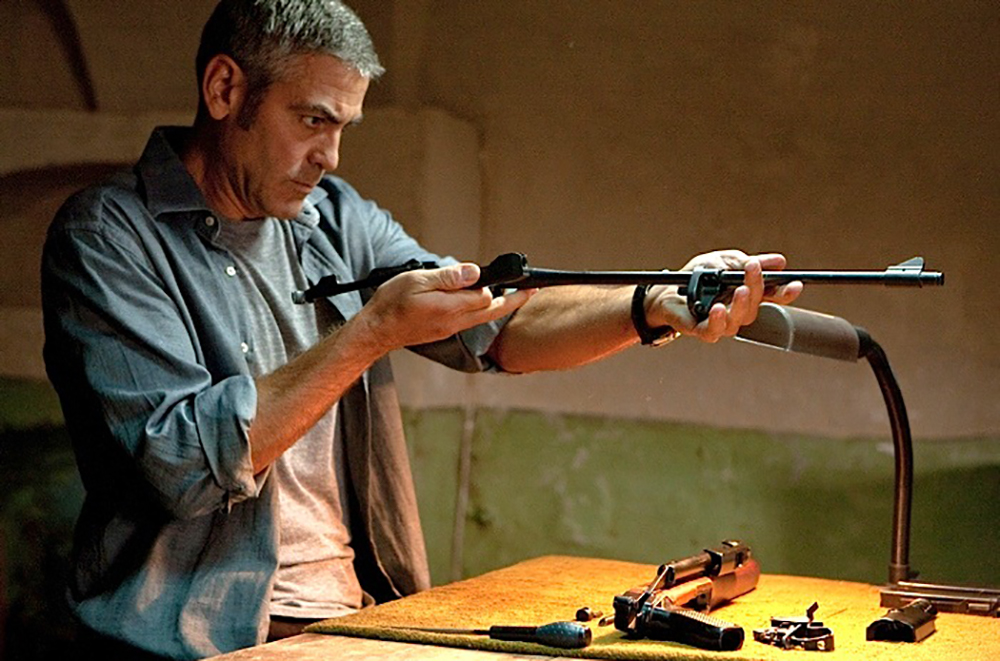“The American” is currently available to watch or rent on most streaming platforms.
Anton Corbijn’s “The American” is a great movie. With a title like that, it would have been so easy to create a spy-induced thriller with well-choreographed shootouts and thrilling car chases, filled with espionage and intrigue. However, what we have here is veteran actor George Clooney’s slowest movie to date, and a mediation on absolution. It asks questions like, is absolution possible?, and broadens that scope to ask the same of a hitman. It’s based on the novel “A Very Private Gentleman” by Martin Booth, and is more indie than Hollywood—which is always a compliment in cases like this.
Beginning in Sweden and ultimately leading to a quiet hamlet in Italy, the only thing ‘American’ about the film is its lead. Edward (or is it Jack? It changes a lot), is a supposedly-American assassin laying low in Italy for one last job. And while this may seem a standard trope, in Clooney and Corbijn’s hands it becomes something more. This ‘last job’ includes making a custom rifle for a client who is to perform a hit (Thekla Reuten); and through this we’re treated to slow-paced scenes of Edward filing down metal barrels, pounding with ball peen hammers, and intricately balancing his finished product. There’s certainly nothing exciting about it, and “The American” doesn’t want there to be. There’s more to tell here.
From the film’s onset, we see Corbijn ask the question: can men really leave their sins and troubled lives behind? Or does destiny follow them, like a curse? We can tell that Edward wants a normal life while camping in Sweden. However, his quest for this gets a girl killed, and his handler, Pavel (Johan Leysen) criticizes him for this. “Don’t make any friends, Jack. You used to know that.” We don’t know the specifics of Pavel and Jack’s relationship, and we’re not supposed to. Things seem to be at a boiling point, with both weary of the other.

The slow pace of the film—shot to perfection by Cinematographer Martin Ruhe—inserts viewers in its quaint Italian backdrop, eager to fit in just as does Edward. Most of “The American” is filmed in this way: cafes, nighttime walks, and methodical craftsmanship are its major modus operandi. Along the way we learn that Edward has regrets, nightmares, and, above all things, the capacity to love.
“The American” shows this intricately through two characters. The first is a forgiving priest (a great Paolo Bonacelli), and the second a love interest in the form of a prostitute named Clara, played to perfection by Violante Placido. Mind you, this is not “Pretty Woman;” however, the way Corbijn creates their first ‘date’ is so quaint and original it belongs in a romantic drama, and not a hitman-soaked introspection. Edwards’s dealings with both Clara and the Father make up the meat of this movie, investing us in the production.
For a movie that is about an assassin laying low, it’s hard to discern ‘assassin’ from the treatment Corbijn gives this film. Less than 10 gunshots line its run-time, most of them harmless practice shooting, almost to the point where your forget this is a dangerous movie. As Edward grows closer to Clara, and likewise to the Father, he begins to question his past and torturous questions start to rise in his mind like, Can I just walk away from this? “The American” tells this through symbolism and style. For instance, Edward has a tattoo of a butterfly on his back (rebirth); and while spending a shooting-range test run of his new gun, a butterfly lands on his client’s arm, whom he warns not to hurt it. It’s endangered, he says. But we gather it’s so much more than a butterfly he is talking about.
What works most about “The American” is its atmosphere. What also works is that Clooney, a hugely-prolific actor, is content to fade into the background and let the story tell itself. Whispers line most of Edward’s speech, and, save for one scene, Clooney is not really suave. This is not an actor’s role for him, but one of presence. He carries the story along until its foreboding 3rd act, where a single smash of his fist on a steering wheel shows the emotion he has been hiding thus far. In it we see all he is and could be, wrapped in a single moment shot and acted to perfection.
“The American” eventually comes full-circle in a spy-esque way, but does nothing to undo the intimate storytelling delivered thus far. I’ve seen this movie twice, and this time around I caught something new. It wasn’t that Edward is seeking to protect himself, but rather to take the first step to save his soul. The film shows it in a beautifully-subtle way that made me appreciate it all the more. The movie ends the way it must, but along the way you realize you’ve stumbled upon something special. If you haven’t, do yourself a favor and watch this film. It’s Clooney and Corbijn at their best, and leaves a mark and stays with you once the credits roll.